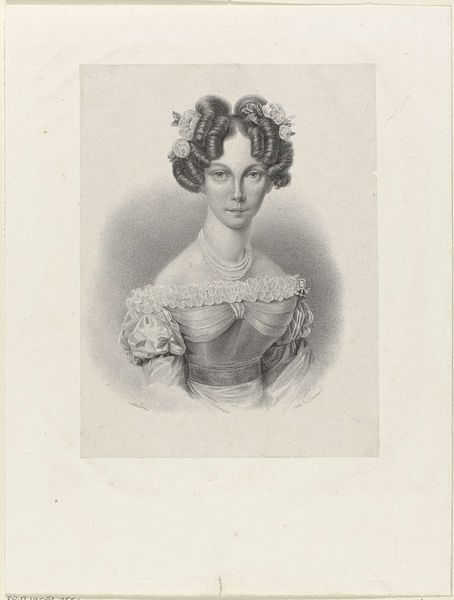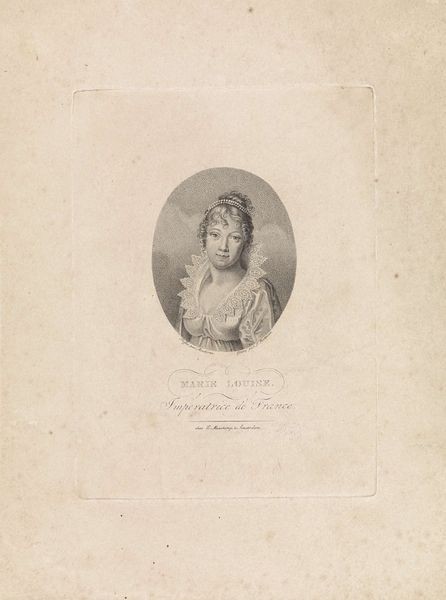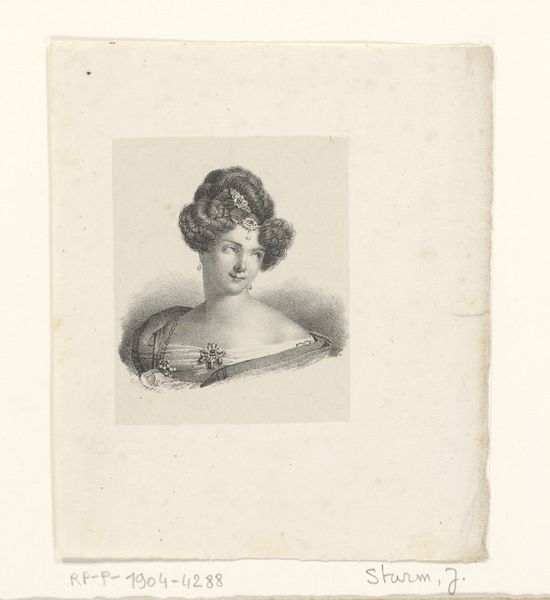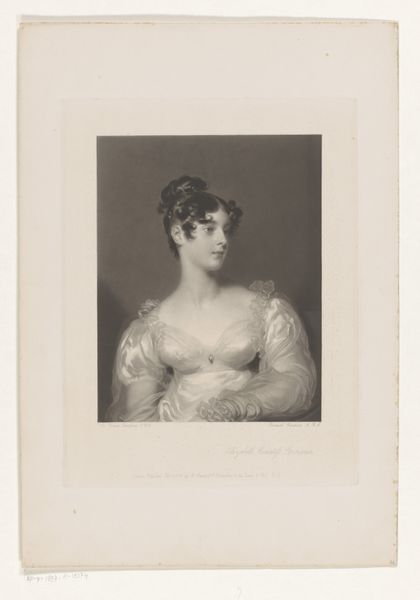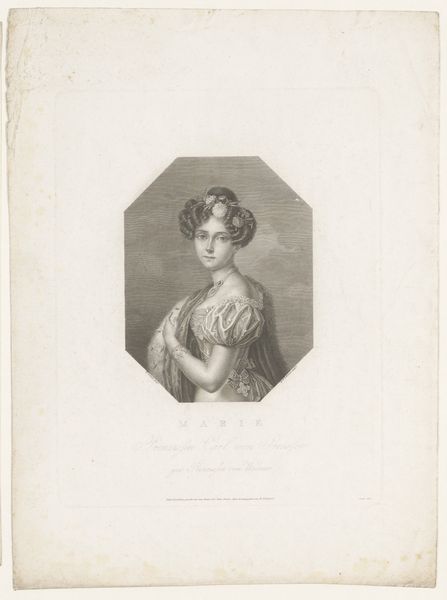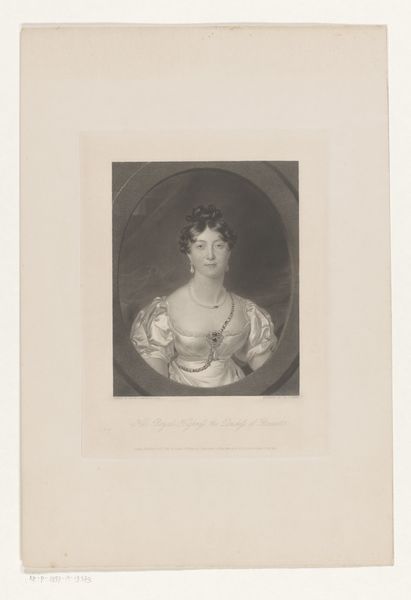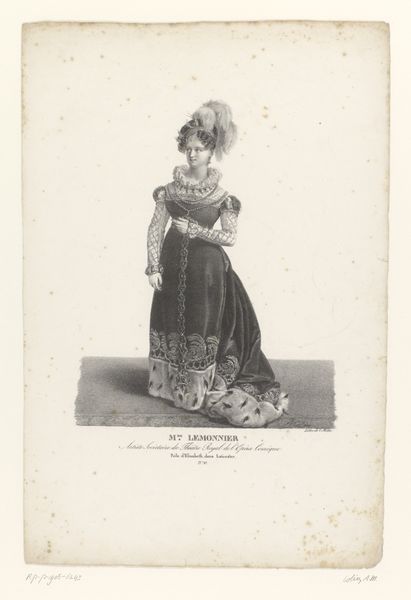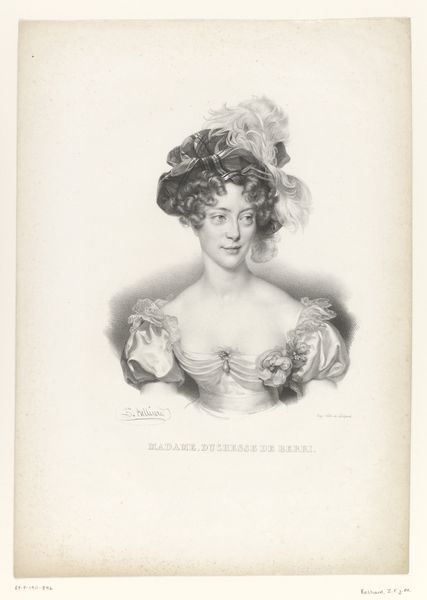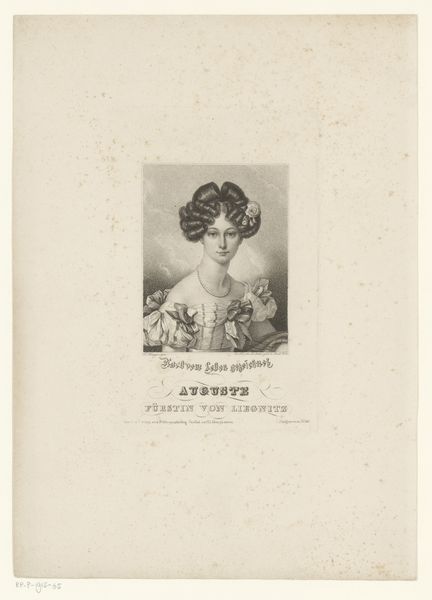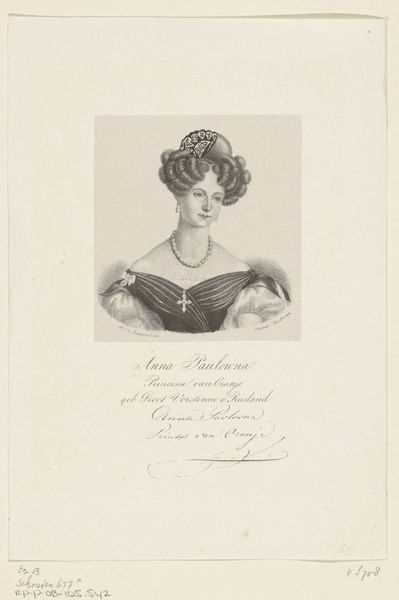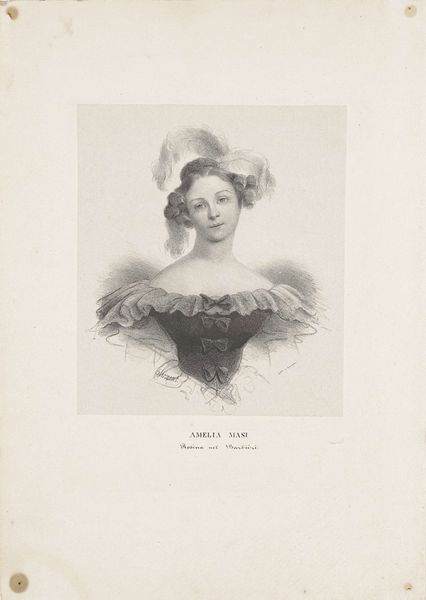
Dimensions: height 268 mm, width 209 mm
Copyright: Rijks Museum: Open Domain
Curator: Here we have "Portret van Louise van Pruisen," made sometime between 1825 and 1899 by Wilhelm Devrient, held at the Rijksmuseum. It is an engraving. Editor: It's so delicate! It has a romantic, almost dreamlike quality. How was an image like this made back then, what can you tell me about the process? Curator: This is an engraving, so let's think about the labour involved. The artist would have used a tool called a burin to carve lines into a metal plate. The plate would then be inked, and the surface wiped clean, leaving ink only in the incised lines. This is a labour intensive reproductive technology from which multiple, but not infinite, impressions are made. The materials themselves speak to a certain kind of industrialized craft. Who would consume such an image, and where might they see it displayed? Editor: That’s interesting. So the production of the image – the technique, the tools – played a role in who got to see it? Was this kind of printmaking accessible, or more for the elite? Curator: Precisely. Consider the social context. This isn't a unique painting commissioned by a wealthy patron, but a print – relatively more accessible, a commodity. The very act of reproducing an image like this democratizes access to power...a little, while also demonstrating how techniques dictate access and affordability. Also, thinking of class differences is relevant, because an engraving like this emulates the status and “aura” of oil paintings that, while also paintings of nobility and wealthy classes, would not be necessarily viewed at peoples' homes from classes lower than the depicted person. Editor: So it’s more than just an image; it’s about who can afford it and the impact of mechanically reproducing images of power. Fascinating. I’ll never look at prints the same way. Curator: Thinking about the methods, material and social context in creating this engraving illuminates new layers in the work.
Comments
No comments
Be the first to comment and join the conversation on the ultimate creative platform.
